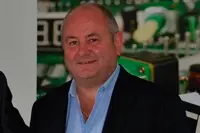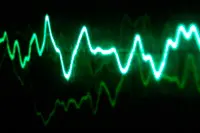Electronics News
Archive : 3 November 2015 год
 Astute Electronics has gained certification to AS 6081, the SAE Aerospace Standard that addresses counterfeit mitigation which is designed to provide a high level of protection for companies in the aerospace and defence industries.
Astute Electronics has gained certification to AS 6081, the SAE Aerospace Standard that addresses counterfeit mitigation which is designed to provide a high level of protection for companies in the aerospace and defence industries.
Astute is the first British and first European company to gain certification and the fourth company in the world to achieve this. Astute is also the first company worldwide to have more than one location certified (UK and USA).
AS 6081 standardises practices and methods to mitigate the risks of purchasing and supplying fraudulent/counterfeit electronic parts. It covers the identification of reliable sources to procure parts; assessing and mitigation risk of distributing fraudulent/counterfeit parts; control of suspect or confirmed fraudulent/counterfeit parts and; reporting suspect and confirmed fraudulent/counterfeit parts to other potential users.
Geoff Hill, MD of Astute Electronics, said: “Astute has been at the leading edge of preventing counterfeit components entering the supply chain for many years now. Back in 2006 we identified that industry needed to take this issue more seriously.
“Since then we have invested over £1m in test facilities in the UK which are used to determine the authenticity of any components that we source which do not come with full manufacturers’ tracing documentation – a situation that mostly occurs in the course of sourcing obsolescent components. We also have set up a similar facility in our premises in the USA.”
Astute uses scanning electron microscopy equipment to check to see if the part has the right marking and materials, and also to compare parts against a library of known good parts it has built up. Therefore, if a component shows up with a different material construction it can be identified immediately as a counterfeit.
Hill added: “Our test facility allows us to check the ‘DNA’ of a device against a proven ‘gold standard’ in order to determine whether or not the part is genuine or counterfeit. We are proud and delighted to be able to offer our customers the highest levels of protection.”
Pic: Geoff Hill, MD, Astute Electronics
Author
Tom Austin-Morgan
Source: www.newelectronics.co.uk
 Research made by a team from the Universities of Sheffield and Leeds has shown that faster computing speeds can be attained by using certain types of sound waves. The researchers claim that these sound waves can move data quickly, using minimal power.
Research made by a team from the Universities of Sheffield and Leeds has shown that faster computing speeds can be attained by using certain types of sound waves. The researchers claim that these sound waves can move data quickly, using minimal power.
Most of the world's 2.7ZBytes of data is held on hard disk drives, with the data read by sensors that scan over the disk's surface as it spins. But because this involves moving parts, there are limits on how fast it can operate.
For computers to run faster, ‘solid-state’ drives have been created that eliminate the need for moving parts - essentially making the data move, not the device on which it's stored. Flash-based solid-state disk drives have achieved this, and store information electrically rather than magnetically. However, while they operate faster than normal hard disks, they last less time before becoming unreliable, are more expensive and run slower than other parts of a modern computer - limiting total speed.
Creating a magnetic solid-state drive could overcome all of these problems. One solution being developed is ‘racetrack memory’, which uses tiny magnetic wires down which magnetic ‘bits’ of data run. Existing research into racetrack memory has focused on using magnetic fields or electric currents to move the data bits down the wires. However, both these options create heat and reduce power efficiency, which will limit battery life, increase energy bills and CO2 emissions.
Dr Tom Hayward from the University of Sheffield and Professor John Cunningham from the University of Leeds have devised a solution: passing sound waves across the surface on which the wires are fixed. They also found that the direction of data flow depends on the pitch of the sound generated.
The sound used is in the form of surface acoustic waves. Although already harnessed for use in electronics and other areas of engineering, this is the first time surface acoustic waves have been applied to a data storage system.
Dr Hayward said: "The key advantage of surface acoustic waves in this application is their ability to travel up to several centimetres without decaying, which at the nano-scale is a huge distance. Because of this, we think a single sound wave could be used across large numbers of nanowires simultaneously, enabling us to move a lot of data using very little power. We're now aiming to create prototype devices in which this concept can be fully tested."
Author
Tom Austin-Morgan
Source: www.newelectronics.co.uk

